Dublin, the capital of Ireland, is a city where rich history meets vibrant culture. Known for its welcoming people, iconic landmarks, and lively atmosphere, Dublin offers experiences that cater to every traveler. From historic cathedrals and interactive museums to serene parks and bustling streets, every corner of this city has a story to tell. Whether you’re a history buff, an art lover, or just exploring for fun, Dublin promises unforgettable moments that will leave a lasting impression.
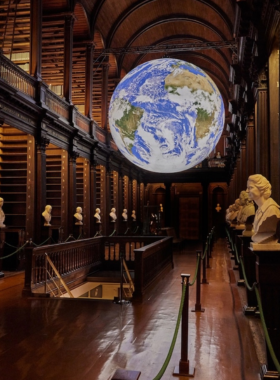
Explore the Trinity College and The Book of Kells
Address: The University of Dublin Trinity College, College Green
| Type | Sightseeing |
| Time to Spend | 2 hours to Half Day |
History and Significance: Founded in 1592, Trinity College is Ireland’s oldest university, deeply rooted in Dublin’s history. The Book of Kells, created around 800 AD, is one of the most famous illuminated manuscripts, showcasing Celtic art and monastic dedication.
What to Expect: Visitors can explore the impressive Long Room Library, home to over 200,000 rare books. The Book of Kells exhibit highlights detailed pages of this treasured manuscript, along with informative displays.
Visitor Information: Located in central Dublin, guided tours are available. Tickets for the Book of Kells can be purchased online. Operating hours vary, so check ahead for availability.
Trinity College, Ireland’s most prestigious university, is home to the breathtaking Book of Kells, a famous medieval manuscript. The Long Room Library, lined with ancient books, showcases incredible architectural beauty. While the Old Library undergoes renovations, visitors can still witness the manuscript’s intricate details. Afterward, explore the surrounding campus, admire the elegant buildings, and visit the nearby shops for unique souvenirs. It’s a must-visit for anyone seeking Dublin’s literary and artistic charm.
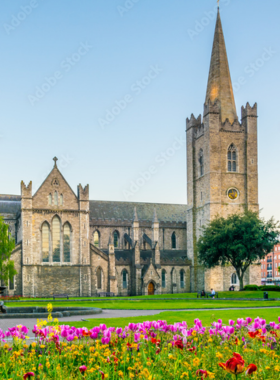
Visit St. Patrick’s Cathedral
Address: St Patrick’s Close, Wood Quay
| Type | Churches/Religious Sites |
| Time to Spend | 1 to 2 hours |
History and Significance: Built in 1191, St. Patrick’s Cathedral honors Ireland’s patron saint. It played a vital role in Irish history, serving as a place of worship and cultural significance for over 800 years.
What to Expect: Marvel at the stunning Gothic architecture, beautiful stained glass windows, and historical memorials. The cathedral’s park offers peaceful walks and scenic beauty.
Visitor Information: Located on St. Patrick’s Close, the cathedral is open daily. Entry fees apply, and guided tours are available. The nearby Brazen Head pub is perfect for refreshments.
St. Patrick’s Cathedral is a magnificent architectural marvel built in honor of Ireland’s patron saint. It stands as the country’s largest cathedral, with origins dating back to the 13th century. Visitors can explore its stunning interiors, memorials, and ancient stained glass windows. Outside the cathedral, a beautiful park awaits, ideal for peaceful walks. To complete your experience, stop by The Brazen Head pub nearby to savor Irish food, music, and the city’s vibrant local culture.
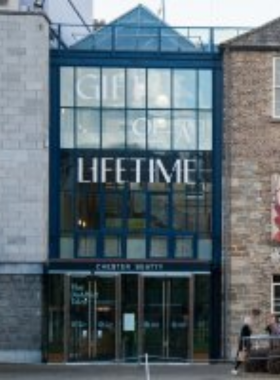
Step Inside the Chester Beatty Library
Address: Dublin Castle
| Type | Museums, Free |
| Time to Spend | 2 hours to Half Day |
History and Significance: Founded by Sir Alfred Chester Beatty in 1950, this library houses one of the finest collections of manuscripts and artifacts from Asia, the Middle East, and Europe.
What to Expect: Explore rare manuscripts, religious texts, and cultural artifacts spanning thousands of years. The exhibitions rotate, and there’s a rooftop garden for relaxation.
Visitor Information: Located near Dublin Castle, admission is free. The library is open Tuesday to Sunday, with facilities like a café and gift shop available.
The Chester Beatty Library is a hidden treasure that houses an extraordinary collection of rare manuscripts, books, and artifacts from around the world. Located near Dublin Castle, this free museum displays works dating back to 2700 B.C., offering visitors an unforgettable journey through history. Marvel at ancient Asian scrolls, religious texts, and European art. With rotating exhibitions and a peaceful rooftop garden, the Chester Beatty Library is a serene and educational stop for history enthusiasts and explorers.
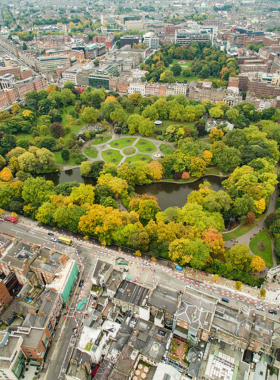
Relax at St. Stephen’s Green
Address: St Stephen’s Green Square
| Type | Free, Parks and Gardens |
| Time to Spend | 1 to 2 hours |
History and Significance: St. Stephen’s Green opened in 1880 as a public park, designed in Victorian style. It has witnessed significant historical events, including Ireland’s fight for independence.
What to Expect: The park offers colorful flowerbeds, peaceful ponds, and walking paths dotted with statues of Irish historical figures. It’s ideal for picnics and relaxation.
Visitor Information: Centrally located near Grafton Street, the park is open year-round with no entry fee. Cafés and shops nearby make it a perfect break spot.
St. Stephen’s Green is a peaceful retreat in the heart of Dublin. Open since 1880, this Victorian park features scenic walking paths, colorful flowerbeds, and tranquil ponds. The park is dotted with statues and monuments honoring Irish heroes, including writers and revolutionaries. Visitors can relax on benches, enjoy a picnic, or stroll the carefully designed gardens. With its serene atmosphere and natural beauty, St. Stephen’s Green is the perfect place to take a break from city exploration.
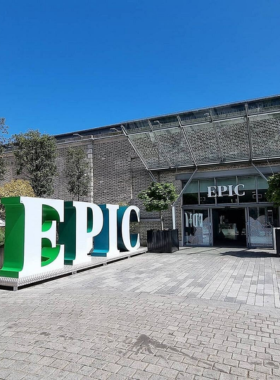
Walk Through EPIC – The Irish Emigration Museum
Address: CHQ, Custom House Quay
| Type | Museums, Tours |
| Time to Spend | 1 to 2 hours |
History and Significance: EPIC Museum celebrates Ireland’s emigration story, highlighting the struggles and successes of over 10 million Irish people who left their homeland.
What to Expect: Interactive, multimedia exhibits bring history to life. Learn about Irish contributions to music, literature, science, and politics worldwide.
Visitor Information: Located in the Docklands, tickets are available online. Open daily, the museum is wheelchair accessible, with guided tours and cafés nearby.
The EPIC Museum is an award-winning interactive museum that tells the story of Ireland’s emigration history. With immersive displays, multimedia exhibits, and personal stories, visitors learn how Irish emigrants influenced the world across art, science, and politics. Located in the Docklands, this modern museum is a deeply moving experience for travelers of all ages. It highlights the resilience, achievements, and cultural contributions of Irish people, making it a must-see for those exploring Dublin’s heritage.
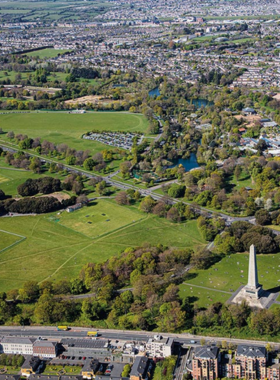
Spend Time at Phoenix Park
Address: Phoenix Park
| Type | Zoos and Aquariums, Free, Parks and Gardens |
| Time to Spend | Half Day to Full Day |
History and Significance: Established in 1662, Phoenix Park is one of Europe’s largest city parks and once served as a royal hunting ground.
What to Expect: Explore scenic walking paths, spot wild deer, and visit landmarks like the Wellington Monument and Farmleigh Estate. It’s a great spot for outdoor activities.
Visitor Information: Located 2.5km from Dublin city center, entry is free. Open daily, it’s accessible via bus or car. Bike rentals are available for exploring the vast grounds.
Phoenix Park, one of Europe’s largest city parks, is an incredible natural escape in Dublin. Spanning over 1,700 acres, it’s home to free-roaming fallow deer, cycling paths, and historic monuments. Visit Farmleigh Estate, a picturesque property with stunning gardens, or the Phoenix Park Visitor Centre to learn about the area’s history. Whether you’re exploring on foot, enjoying a picnic, or watching the deer roam, Phoenix Park offers endless opportunities for relaxation and outdoor adventure.
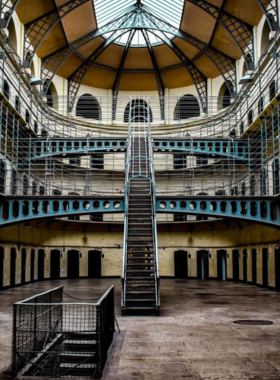
Discover Kilmainham Gaol
Address: Inchicore Road
| Type | Museums, Sightseeing |
| Time to Spend | 2 hours to Half Day |
History and Significance: Kilmainham Gaol opened in 1796 and became a key site in Ireland’s struggle for independence, holding political prisoners from the 1916 Easter Rising.
What to Expect: Walk through cold stone corridors, view preserved cells, and hear stories of revolutionaries. The guided tours offer powerful insights into Ireland’s past.
Visitor Information: Located west of the city center, tickets should be booked online in advance. The museum is open daily, and guided tours are highly recommended.
Kilmainham Gaol, a former prison turned museum, is a significant landmark in Irish history. Visitors can tour the preserved cells and learn about its role during Ireland’s fight for independence. Many revolutionaries from the 1916 Easter Rising were imprisoned and executed here. The guided tours provide powerful stories and insights into Ireland’s struggle for freedom. Walking through the cold, stone halls is both sobering and moving, offering an unforgettable glimpse into the country’s turbulent past.
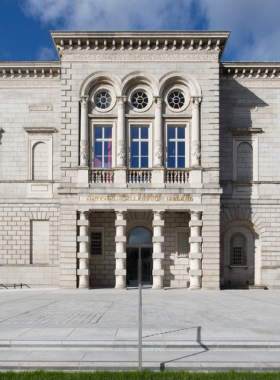
Visit the National Gallery of Ireland
Address: Merrion Square West
| Type | Museums, Free |
| Time to Spend | 2 hours to Half Day |
History and Significance: Founded in 1864, the National Gallery houses Ireland’s finest collection of European and Irish art, showcasing works from the Middle Ages to modern times.
What to Expect: Admire masterpieces by Caravaggio, Monet, and Jack B. Yeats. Special exhibitions and workshops make it a vibrant cultural hub.
Visitor Information: Located on Merrion Square, entry is free. The gallery is open daily, with guided tours and a café for visitors.
Art enthusiasts will love the National Gallery of Ireland, which boasts an exceptional collection of European and Irish masterpieces. Entry is free, making it accessible to all visitors. The gallery features works by artists like Caravaggio, Van Gogh, and Jack B. Yeats. With frequent special exhibitions, events, and family-friendly activities, it’s a perfect spot to enjoy art and culture. Whether you’re an art lover or a casual observer, the National Gallery is a creative haven in Dublin.
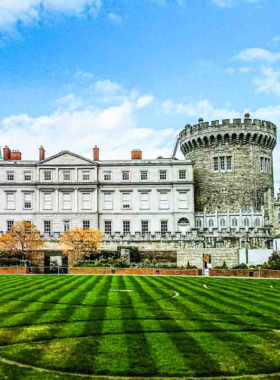
Tour Dublin Castle
Address: Dame Street
| Type | Castles/Palaces |
| Time to Spend | 1 to 2 hours |
History and Significance: Built in the 13th century, Dublin Castle served as the seat of British rule in Ireland for centuries. Today, it’s an important government and cultural site.
What to Expect: Explore the lavish State Apartments, medieval undercroft, and historic Chapel Royal. The castle grounds feature beautiful gardens and art displays.
Visitor Information: Located in the city center, entry tickets can be purchased on-site or online. Guided tours provide deeper historical insights.
Dublin Castle, once a Viking fortress, is a fascinating historical site that has evolved over centuries. Visitors can explore the State Apartments, medieval undercroft, and the Chapel Royal. The castle played a pivotal role in Ireland’s history, especially during British rule and the Easter Rising. Wander through its stunning halls, admire the art, and learn about Dublin’s past. With beautiful gardens and informative tours, Dublin Castle offers a captivating experience for history buffs and curious travelers.
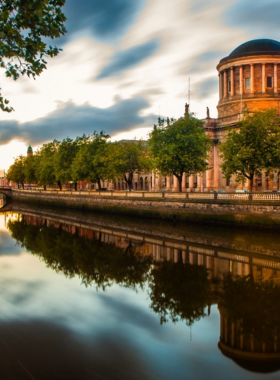
Stroll Along the River Liffey
Address: Ireland
| Type | Sightseeing |
| Time to Spend | 2 hours to Half Day |
History and Significance: The River Liffey has shaped Dublin’s development for centuries, connecting the city’s history, economy, and culture.
What to Expect: Walk along the scenic riverside, photograph iconic bridges like the Ha’penny Bridge, and enjoy local cafés or evening sunset views.
Visitor Information: Easily accessible from central Dublin, the riverside walk is free. Many shops, pubs, and attractions are nearby for added enjoyment.
The River Liffey flows through the heart of Dublin, offering picturesque views and a charming atmosphere. A leisurely walk along its banks provides a glimpse of the city’s character, with its mix of modern and historic bridges. The Ha’penny Bridge, in particular, is an iconic photo spot. Grab a coffee from a riverside café, enjoy the views, and soak in Dublin’s vibrant energy. Watching the sunset over the Liffey is a simple yet memorable experience.
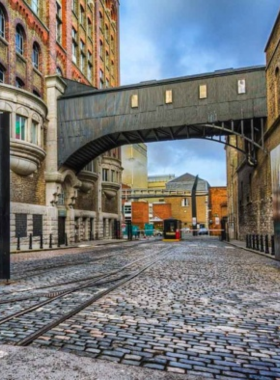
Enjoy a Tour at the Guinness Storehouse
Address: St James’s Gate
| Type | Wineries/Breweries |
| Time to Spend | 1 to 2 hours |
History and Significance: Founded in 1759, the Guinness Storehouse celebrates the story of Ireland’s most iconic beer. The Gravity Bar offers panoramic city views.
What to Expect: Interactive exhibits detail the brewing process, history, and branding of Guinness. End the tour with a pint of freshly poured Guinness.
Visitor Information: Located at St. James’s Gate, tickets should be booked online. Open daily, the tour takes approximately 1.5 hours.
The Guinness Storehouse is Dublin’s most famous attraction, offering a behind-the-scenes look at Ireland’s iconic drink. Visitors explore the brewing process across interactive exhibits and finish the tour at the Gravity Bar. From here, enjoy breathtaking panoramic views of Dublin while sipping a perfectly poured pint of Guinness. It’s an entertaining and cultural experience that appeals to both beer enthusiasts and travelers curious about Dublin’s most beloved export.
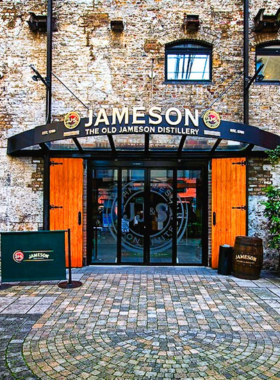
Explore the Jameson Distillery
Address: Bow Street, Smithfield Village
| Type | Tours, Wineries/Breweries |
| Time to Spend | 1 to 2 hours |
History and Significance: The Jameson Distillery, established in 1780, is a cornerstone of Dublin’s whiskey heritage, showcasing traditional Irish craftsmanship.
What to Expect: Enjoy guided tours, whiskey tastings, and insights into Jameson’s rich history. Participate in cocktail-making classes for added fun.
Visitor Information: Located in Smithfield, tours can be booked online. Open daily, with tasting sessions available. The distillery has a shop and bar.
For whiskey lovers, the Jameson Distillery offers an immersive and entertaining experience. Visitors can tour the historic distillery, learn about the whiskey-making process, and participate in tastings. The expert guides share fascinating stories about Jameson’s heritage and craftsmanship. Whether you’re a whiskey aficionado or just curious, the distillery’s vibrant atmosphere and engaging tours make it a unique stop in Dublin, blending history, storytelling, and delicious samples in one memorable visit.
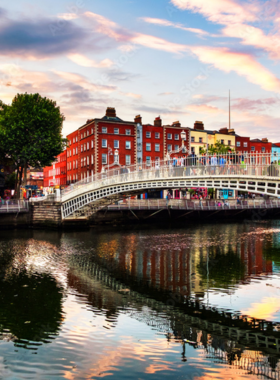
Discover the Ha’penny Bridge
Address: Ha’penny Bridge, North City, Dublin, Ireland
| Type | Sightseeing |
| Time to Spend | 2 hours to Half Day |
History and Significance: Built in 1816, the Ha’penny Bridge connected Dubliners across the River Liffey, originally charging half a penny for passage.
What to Expect: Walk across the elegant iron bridge and take iconic photos of the River Liffey. The views are especially beautiful at sunset.
Visitor Information: The bridge is centrally located and free to access. Surrounding areas offer shops, cafés, and cultural spots.
The Ha’penny Bridge, an iconic pedestrian bridge built in 1816, is one of Dublin’s most photographed landmarks. Originally charging half a penny for crossings, it remains a beloved symbol of the city. Today, visitors can admire its graceful design and take stunning photos of the River Liffey. The bridge connects lively areas of Dublin, making it a popular stop for both locals and tourists. Crossing the Ha’penny Bridge feels like stepping into a piece of history.
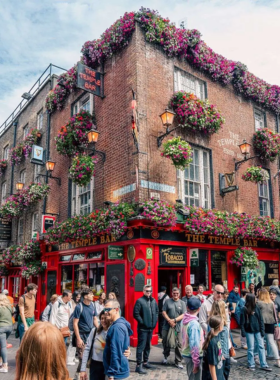
Visit Temple Bar
Address: Temple Bar Square
| Type | Entertainment and Nightlife, Free, Neighborhood/Area |
| Time to Spend | 2 hours to Half Day |
History and Significance: Temple Bar is Dublin’s cultural quarter, known for its artistic energy and historic cobbled streets, offering a mix of tradition and nightlife.
What to Expect: Explore galleries, shops, and vibrant pubs with live music. The area transforms into a buzzing nightlife hub after sunset.
Visitor Information: Located in central Dublin, Temple Bar is free to visit. Daytime and nighttime offer unique experiences for visitors.
Temple Bar is Dublin’s cultural heart, bustling with art, music, and nightlife. By day, visitors can browse quirky shops, art galleries, and cafes. At night, the area transforms into a lively hub with pubs offering live music, food, and dancing. Known for its vibrant energy, Temple Bar is a must-visit for those looking to experience Dublin’s local charm and festive spirit. Whether day or night, this neighborhood captures the essence of the city.
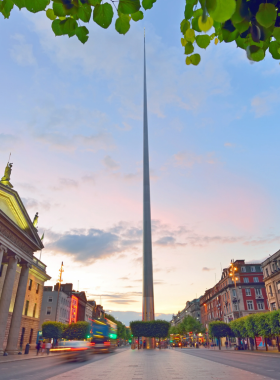
See the Spire of Dublin
Address: O’Connell Street Upper, North City, Dublin, Ireland
| Type | Monument, Sightseeing, Restaurants |
| Time to Spend | 2 hours to Half Day |
History and Significance: Completed in 2003, the Spire of Dublin stands as a symbol of the city’s modern transformation and resilience.
What to Expect: Admire its sleek 120-meter design, which glistens in sunlight and illuminates at night. It’s a great landmark for photos.
Visitor Information: Located on O’Connell Street, the Spire is free to visit. The area has shops, restaurants, and easy transport connections.
The Spire of Dublin, a striking monument on O’Connell Street, stands 120 meters tall as a symbol of the city’s modern spirit. Also called the “Monument of Light,” it gleams during the day and illuminates the night skyline. Visitors can admire its sleek design and explore the surrounding area, which is rich in shops and restaurants. The Spire serves as both a contemporary landmark and a meeting point for travelers exploring Dublin’s lively center.
